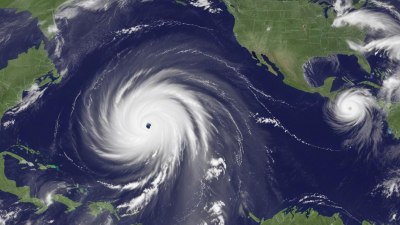Why the Sky Sometimes Looks Purple After a Storm
Explore the science behind the purple sky phenomena after storms and understand its causes and implications.

After a thunderstorm passes, it’s not uncommon to see the sky taking on a stunning purple hue. This captivating sight often leaves observers in awe, sparking questions about its origins and significance. The vibrant hues of the sky post-storm can evoke feelings of beauty, wonder, and at times, even unease. But why does this happen? What contributes to the purple colors that we occasionally witness after a tempest? In this article, we will decipher the science behind this phenomenon, looking into atmospheric conditions, light scattering, and the types of storms that produce these breathtaking skies.
The Science of Light Scattering
To understand why the sky turns purple after a storm, we must first explore the concept of light scattering. Light from the Sun interacts with microscopic particles in the atmosphere. When sunlight enters our atmosphere, it collides with air molecules, dust, and water droplets. This interaction causes the light to scatter in various directions. The phenomenon is known as Rayleigh scattering and it occurs more prominently with shorter wavelengths of light—violet and blue hues—which is why the clear daytime sky appears blue. During and after storms, the atmosphere is filled with moisture and particulates, creating conditions that enhance scattering.
Storm Conditions and Their Effects
Thunderstorms and severe weather conditions contribute massively to the atmospheric changes leading to purple skies. During a storm, heavy rain and gusty winds churn up the air, causing clouds to form and moisture to saturate the environment. The presence of these water droplets and larger particles impacts how light scatters. When the storm begins to clear, the setting Sun shines through clouds filled with water droplets and debris that have been swept up during the storm. If conditions align perfectly, the sunset can take on a myriad of colors, including shades of purple.
The Role of Cloud Types
The types of clouds remaining after a storm are also critical in determining the colors we see. Storm clouds, particularly cumulonimbus (the towering clouds associated with thunderstorms), can trap light and enhance colors. When storms move away, the remaining clouds can take on a structure that refracts and diffuses the light beautifully. Mid-level clouds, like altostratus or altocumulus, often appear after storms subside and can reflect sunlight in ways that create deep oranges, pinks, and purples, depending on their density and the angle of sunlight.
Time of Day Matters
The time of day is another significant factor influencing the purple hues in the sky after a storm. Sunsets typically provide the backdrop for the vibrant displays. As the sun descends below the horizon, its light has to pass through more atmosphere compared to when it is directly overhead. This extended path scatters shorter wavelengths more effectively, leaving longer wavelengths, like reds and oranges, to mix with blue and violet hues from the sky's remnants. The combination can result in striking purple shades, primarily if clouds are absorbing and diffusing these colors.
Temperature and Humidity Factors
The air temperature and humidity levels also affect the colors we see in the sky after storms. Increased humidity after rainfall can enhance the vibrancy of the colors due to a more favorable scattering environment. The cooler temperatures following a storm can further create contrasts in the sky that accentuate its colors. When the air is saturated with moisture and cools, these conditions can lead to more visually stunning outcomes as light interacts with the increased water content in the atmosphere.
Electrical Activity and Its Influence
Interestingly, electrical activity during storms can also play a role. Thunderstorms can create a variety of electrical phenomena, which some studies suggest may influence atmospheric particles. The presence of charged particles can alter how light interacts with the atmosphere, possibly contributing to unusual color displays. The scientific community is still exploring this area, but it's a nod to the interconnected aspects of meteorology and atmospheric physics, showing how storms can affect more than just rainfall.
Regional Variations
It’s essential to note that the occurrence of purple skies isn't uniform globally and can depend heavily on geographical location. Certain regions experience storms differently due to local climate conditions, air quality, and topography. Places with frequent thunderstorms, like areas in the Gulf Coast, often see more vibrant post-storm skies than drier regions, where dust and particles are less prevalent for light interactions. Those living near mountains might also witness more dynamic displays due to the interaction of storm clouds with topographical features.
The Psychological Impact of Color
Not only is the phenomenon scientifically interesting, but it also has psychological implications. Colors can elicit emotional responses, which is why witnessing a colorful sky after a storm can lead to feelings of peace or wonder. The juxtaposition of dark, brooding storm clouds transitioning into beautiful colors might symbolize hope or calm after turmoil, influencing our mood and perception of weather itself. Purple, often associated with creativity and spirituality, brings an enriched context to the experience of viewing the sky post-storm.
Climate Change and Its Influence on Storms
As our climate continues to change, understanding its impact on weather phenomena becomes ever more relevant. Climate change can influence the severity and frequency of storms, which may, in turn, affect how often we see purple skies. Enhanced storm activity, as seen in more intense rainfall and more formidable thunderstorm systems, can lead to more occurrences of vibrant post-storm skies. While the scientific community continues to analyze these trends, it’s noteworthy that our experiences with weather and its visuals might transform alongside shifting climate patterns.
In summary, the stunning purple skies that sometimes follow a storm result from a combination of atmospheric science, cloud dynamics, the scattering of light, and the emotional context of seeing the cosmos respond to weather changes. As we continue to observe nature’s artistry, understanding the reasons behind these occurrences adds depth to our appreciation of the environment. Whether you’re a passionate storm chaser or a casual onlooker, witnessing the interplay of light, moisture, and atmospheric particles can be a reminder of the beauty that can emerge even after nature's fury.











